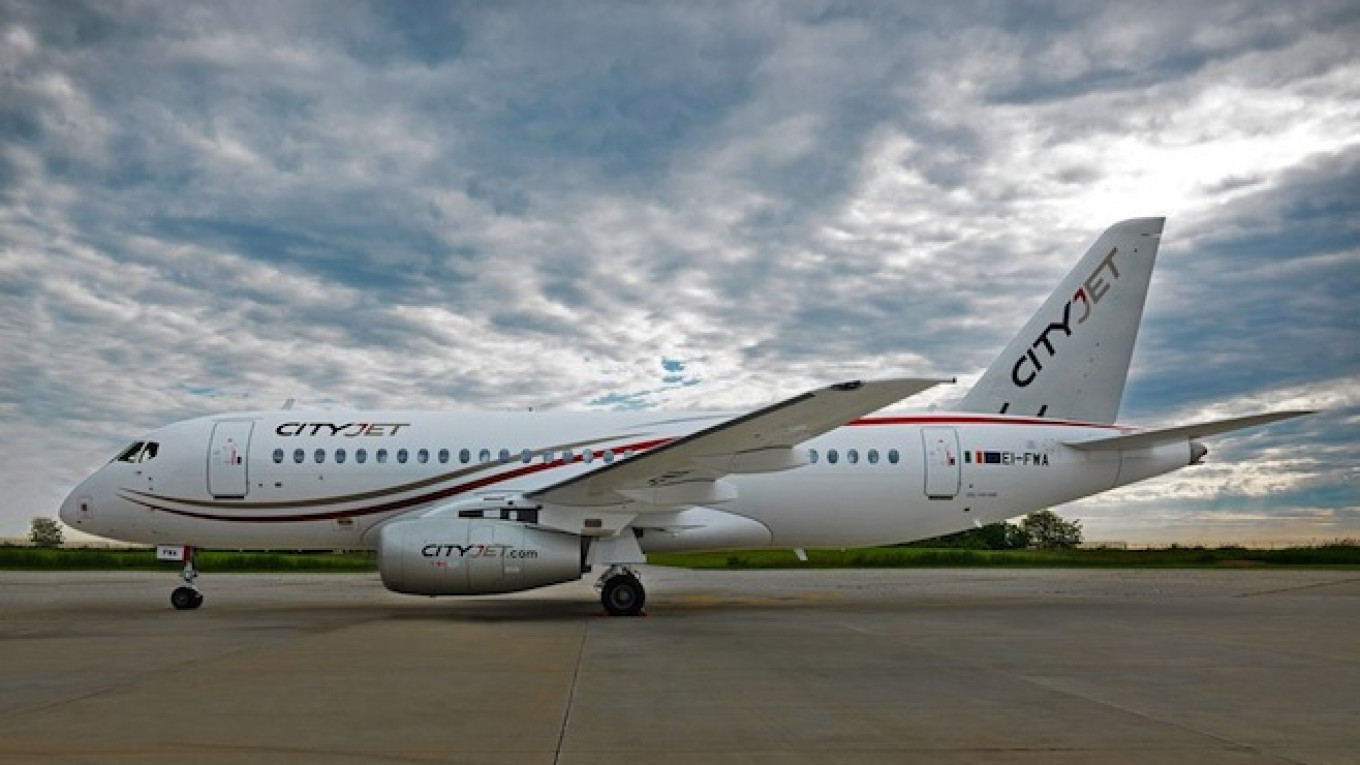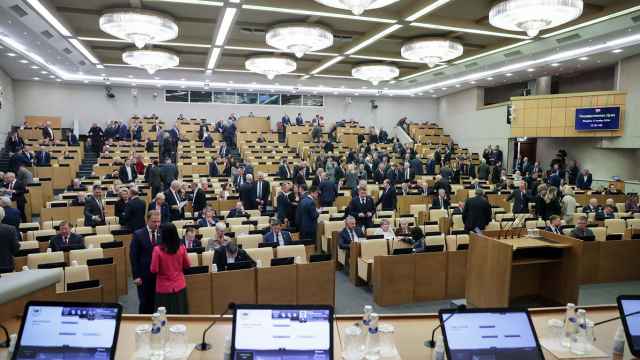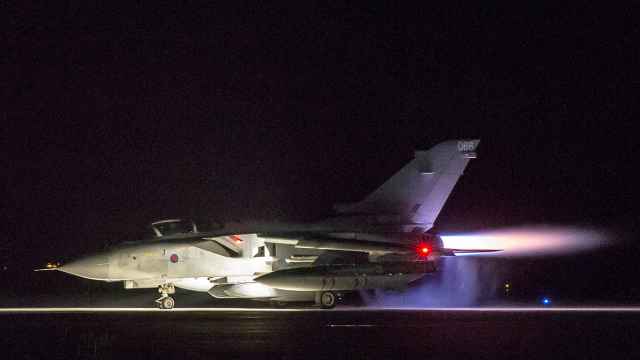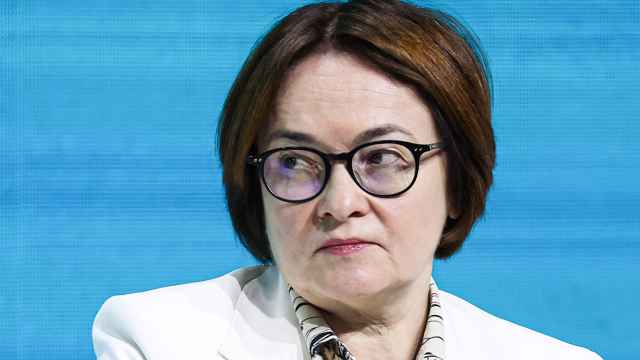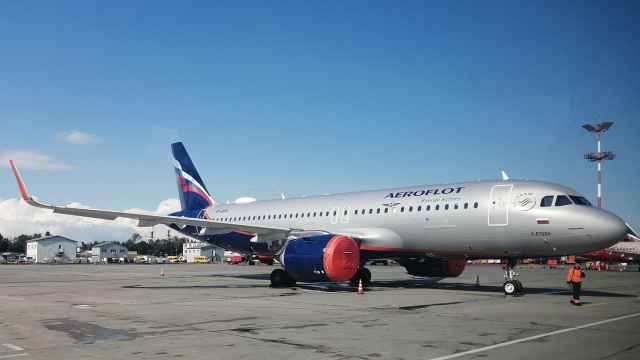On May 24, two shiny Russian Superjets stood nose to nose in an aircraft hangar in Venice, Italy, painted in the colors of CityJet, an Irish regional airline.
On a makeshift stage at the handover ceremony, the airline's chief, Pat Byrne, purred that the 30-meter planes were "magnificent." In the front row, Russian aviation industry bosses smiled to one another like excited schoolchildren.
It was a big moment. The 98-seat regional jet is Russia's first post-Soviet airliner. The multi-billion-dollar project was meant to herald the rebirth of Russian civil aviation. But it has struggled with crises, debts and slow sales.
Now, some seven years after the first Superjet took to the sky, its troubles finally looked like they might be over.
The Russians had broken into the European market.
From the Ashes
The Superjet was born in the destruction of the 1990s. The Soviet Union had been an aviation superpower, employing hundreds of thousands of people to build hundreds of planes each year. But by the turn of the millennium, the sector was smashed. Annual airliner production was down to the single digits.
One man intended to turn it around. Mikhail Pogosyan was an engineer with Armenian roots, a bushy black mustache and an armful of patents. He lived for airplanes, landing a job at one of the Soviet Union's largest manufacturers, Sukhoi, in the late 1970s when fresh out of university.
Pogosyan saw in the 1990s that the aerospace industry would be turned on its head, says Olga Kayukova, a former public relations manager with Sukhoi who worked with Pogosyan for more than a decade. The Soviet past was mostly military production. The future, he thought, would be dominated by civil aviation.
So when Pogosyan became head of Sukhoi's design bureau in 1999, he immediately set about designing an airliner.
It was a revolutionary move. For one, Sukhoi had never built civilian planes. It made warplanes. Also, Pogosyan's vision was global. He knew the Russian market alone wasn't big enough to finance modern airliner construction. So he invited outsiders in.
The plane they made was international and cutting edge. Boeing acted as a consultant. The engine and electronics were built in partnership with French companies Snecma and Thales. Italian aerospace firm Alenia Aermacchi took a 25 percent stake in Sukhoi Civil Aircraft, the new company that would build the jet. They courted airlines, and tried to make what the market wanted.
This would have been anathema in Soviet times. The main production site for the plane in Komsomolsk-on-Amur in Russia's Far East used to be a city closed to foreigners. After the government green-lighted the aircraft in 2003, dividing walls were erected in Sukhoi's factories. Entire factory floors were gutted and rebuilt.
The designers decided not to challenge Boeing and Airbus on the long-haul market. They chose instead a smaller, regional plane. Dubbed the "Russian Regional Jet," it would replace the Tu-134 and the Yak-42, which dated from the 1960s and 1970s and whose NATO reporting names — Crusty and Clobber — underlined how outdated they were.
In 2005-6, polling suggested that the word "Russian" in the name "pulled the product down," says Kayukova. So they dropped it. Rolling Sukhoi's traditional prefix, "Su," around their tongues, someone came up with the word "super." The Sukhoi Superjet was born.
Pogosyan was happy. He announced the new plane was more comfortable than its competitors, cost one-fifth less, at around $30 million each, and was 10 percent cheaper to fly thanks to a fuel-efficient engine.
Through the Superjet, he wanted to raise the share of civil aviation in Russian aircraft construction from around 15 percent to almost 50 percent. He aimed to sell up to 1,000 Superjets and have Russia conquer at least 10 percent of the world airliner market — worth some $5.5 trillion over the next two decades, according to Boeing. By 2018, Russia sought to become the third largest aircraft builder in the world.
Bad Timing
But while the plane was in development, the Superjet's competitors were cementing their market share. Brazil's Embraer and Canada's Bombardier expanded lines of regional aircraft with up to 100 seats, and sold hundreds of them. Sukhoi also looked like it might have been late for the Russian market, with Russian airlines having largely modernized their fleets with foreign Boeings and Airbuses during the 2000s.
At Sukhoi Civil Aircraft, problems began. The Superjet's development was rapid, but the maiden flight was a year late, in 2008. The first committed buyer was Aeroflot, Russia's state-owned flag carrier. It received its first plane in late 2011, more than two years later than promised.
The first commercial flight was in fact made not by Aeroflot, but by Armavia, the national carrier of Armenia, a former Soviet republic. A year later, Armavia returned its two planes to their maker. Its spokesperson told Russian media at the time: "We consider it inappropriate to purchase a plane which requires repairs during its first year in service." Soon afterward, Armavia went bankrupt. It was an inauspicious start.
In 2010, the Superjet had a strong order book of around 200 sales to companies in Russia and southeast Asia. Press reports said buyers in Europe and the Americas were interested. But few of the orders were realized.
"Historically, Russia had little expertise in selling aircraft for export," said a source close to Sukhoi Civil Aircraft. Competitors had better after-sales and maintenance networks. They had financial export infrastructure. They were better known and had more trust on the market.
To put a Western face on the project, Sukhoi forged a sales partnership, called SuperJet International, with Alenia Aermacchi, the Italian firm that helped build the plane. Its only big international success was with Interjet, a mid-sized Mexican airline which, in 2011, bought 30 planes.
Aircraft delivered, market share
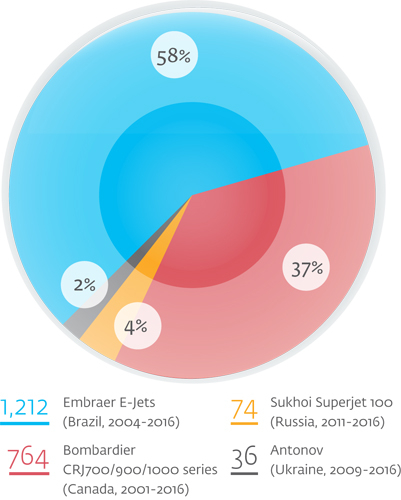
Volcano in the Way
Then disaster struck. On May 9, 2012, a Superjet flying on a demonstration tour of southeast Asia crashed into the side of a volcano in Indonesia. Forty-five people died, including eight crew.
Thus began "months of horror," says Kayukova. What was worse, she said, the Russian press was more tendentious than foreign coverage: Many commentators simply assumed that the plane had failed because it was locally-built.
By the end of the year, an inquest confirmed that pilot error had caused the crash. But many buyers had backed off.
Sukhoi had other issues too. Interjet has consistently said it is satisfied with its Superjets. But in Russia, problems persisted. Vedomosti, a business newspaper, collated flight data for last year and found that many local airlines barely used their Superjets. Aeroflot used them on average an hour a day, the paper found, while Boeings and Airbuses were used for up to 15 hours per day.
Those figures may exaggerate the situation: regional planes don't fly as often as long-haul aircraft, and new plane designs always have bumpy beginnings.
But the problem was real. Airline sources told Vedomosti the Superjets broke down more often, and that spare parts sometimes took weeks to arrive, leaving planes grounded. Mismanagement was to blame, says Oleg Panteleyev, an industry analyst: Neither the airlines nor Sukhoi Civil Aircraft had the money or the inclination to ensure that stores of parts and quick expertise were available.
This situation created a catch-22 for Sukhoi. To gain a good reputation and an economy of scale that would make service and support easier, the Superjet had to be widely used. But its lack of reputation ensured that not many chose to use it. Sales remained slow.
Losses Stack Up
Another reason for poor international sales, according to Richard Aboulafia, vice president of Teal Group, a U.S. industry analyst, was that the Superjet project was "a money-losing disaster."
Sukhoi Civil Aircraft did not comment on its costs, but officially, some $1.5 billion has been plowed into the project. Unofficial estimates go as high as $3.5 billion. Around a quarter of that came from the government.
The project was meant to be cost neutral by 2015 and be assembling more than 50 planes a year. In reality, production peaked at 37 aircraft in 2014. The company's losses mounted.
"It's a good jet," says Aboulafia. But at the same time, big Western airlines "wondered if the company would go under and leave them with an orphaned product."
Last year, the Russian government intervened. Pogosyan was demoted. Market and government sources told the Kommersant newspaper that he had sold too few planes for too little money, and disguised the scale of the failure from his government overseers. Pogosyan had in 2011 been appointed head of United Aircraft Corporation, the state-owned conglomerate that spans Russia's aviation sector and includes Sukhoi. He was replaced by Yury Slyusar, a deputy industry minister.
Slyusar immediately appointed new managers. Pogosyan and his team had been engineers. The incoming management were business-minded and focused on a new primary goal: selling planes.
Soon afterward, the government injected 100 billion rubles (then $1.7 billion) into Sukhoi to pay down its debts, which had grown to some $2.6 billion. It handed half a billion dollars to leasing companies to spur sales, and signed a deal with China to set up a new lessor with $3 billion — enough money to buy a hundred Superjets.
Russia sees civil aviation as a strategic investment. "This is the industry that defines the level of development of innovative technologies in a country," said Pogosyan in 2011. While more than half of its components are imported, large parts are Russian-made and the know-how of assembly is local. Sukhoi Civil Aircraft alone employs more than 2,600 people.
More projects are already on the horizon. Another Russian aircraft manufacturer, Irkut, is spearheading the MS-21. Its name translates as the "Airliner of the 21st Century." The first one is due to be shown a few years behind schedule on June 7.
Like the Superjet, it was developed with Western partners. With government financing of $4.6 billion, Irkut aims to gain 12-15 percent of the international market for 150-200-seat aircraft, selling 1,200-1,500 planes. It will compete directly with Boeing and Airbus.
Meanwhile, Russia and China have been working on a deal worth up to $20 billion to produce a wide-body aircraft, a market that Boeing and Airbus currently monopolize.
Some question whether the Russian aviation industry has made the right decisions. China has a big market, but no history of making good planes. And the Russian state shows no sign of loosening its grip on the sector. That may depress sales in the West, where more nimble, private companies dominate. It magnifies fears of poor service, says Aboulafia. "Nobody likes a state-run commercial company," he said.
Fueling these doubts, the government in late May said it would invest 100 billion rubles ($1.5 billion) into updated versions of the Il-114 and Il-96, two planes first built by the Ilyushin design bureau in the 1980s. Both aircraft would be targeted at the Russian market. Trade Minister Denis Manturov told the Interfax news agency that President Vladimir Putin personally chose to back the Il-114.
The Trailblazer
Sukhoi's original plan said that it had to sell 300 Superjets to break even.
The CityJet deal may help them to do it. The Irish carrier will take 15 planes and has an option to buy another 16. CityJet also operates flights for a number of other European airlines, and Byrne, its chief, said in Venice that Superjets would be painted in those airlines's livery. "I cannot think of a better marketing tool to promote this platform to the wider European community," he said.
Meanwhile, Sukhoi Civil Aircraft plans to open new offices on multiple continents and build comprehensive global support infrastructure to entice buyers, says the source close to the company. Sukhoi promises to sell almost 600 planes by 2030 and says it will start making profits next year.
But the world is moving on. In a couple of years, Embraer and Japan's Mitsubishi will introduce new engines that will likely be more efficient than Sukhoi's, says Teal's Aboulafia. The Superjet may need extra investment to remain competitive.
Sukhoi plans to elongate and upgrade the plane. But the Superjet's real significance may be as a "trailblazer," says Kayukova, who marketed it in its early years.
The jet created expertise in building and selling internationally that is being reused in the MS-21, says Maxim Pyadushkin, a veteran industry reporter. For Russia, he says, "it was a significant technological leap forward." The Superjet was the first Russian plane designed by computer. Every previous aircraft had been drawn on paper and manufactured in wood before going to production.
With all this new expertise, says Kayukova, "it'll be easier for the others who follow."
Contact the author at p.hobson@imedia.ru. Follow the author on Twitter at @peterhobson15
A Message from The Moscow Times:
Dear readers,
We are facing unprecedented challenges. Russia's Prosecutor General's Office has designated The Moscow Times as an "undesirable" organization, criminalizing our work and putting our staff at risk of prosecution. This follows our earlier unjust labeling as a "foreign agent."
These actions are direct attempts to silence independent journalism in Russia. The authorities claim our work "discredits the decisions of the Russian leadership." We see things differently: we strive to provide accurate, unbiased reporting on Russia.
We, the journalists of The Moscow Times, refuse to be silenced. But to continue our work, we need your help.
Your support, no matter how small, makes a world of difference. If you can, please support us monthly starting from just $2. It's quick to set up, and every contribution makes a significant impact.
By supporting The Moscow Times, you're defending open, independent journalism in the face of repression. Thank you for standing with us.
Remind me later.


